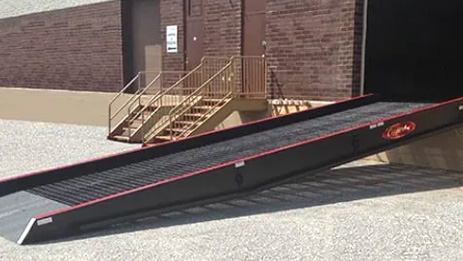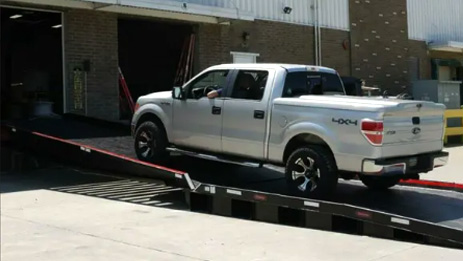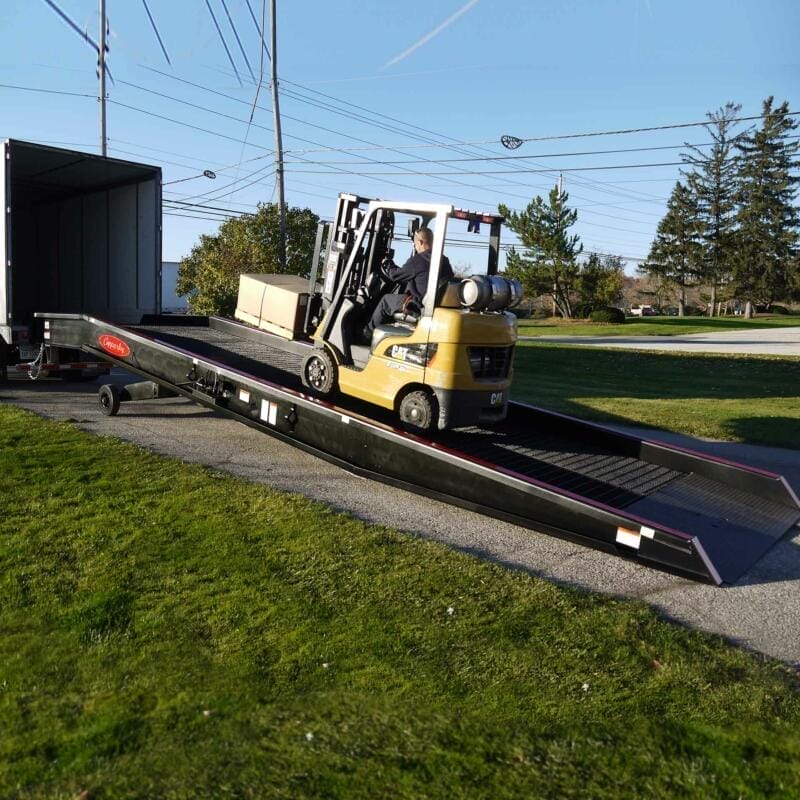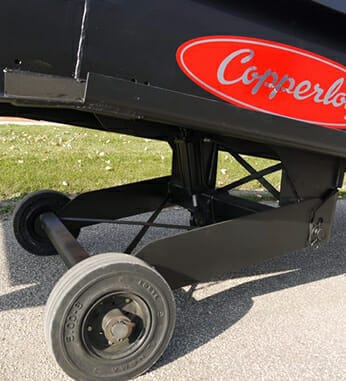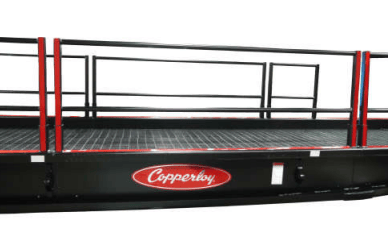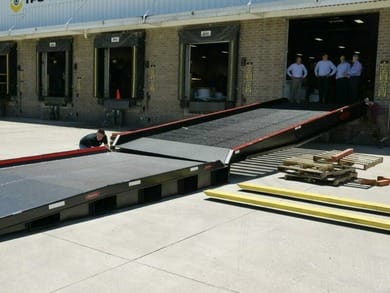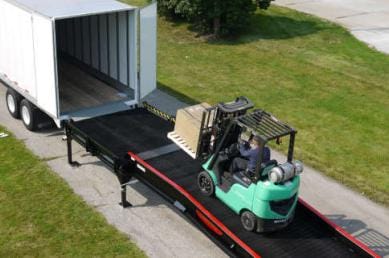Loading Dock Ramps For Faster Loading
Stationary Dock to Ground Ramp Information
Stationary Loading Dock Ramps
Loading dock ramps are industrial solutions that bridge the gap between ground level and the raised floor of industrial or specialized facilities. These durable structures, entirely made in the US, fit seamlessly with any dock door, eliminating the need for costly permanent construction, and can be easily moved as your needs change.
Making Your Job Easier & Safer
Our stationary loading dock ramps have solved the common problems customers have faced with other manufacturers’ loading dock ramps in the past. Many facilities struggle with slow loading processes that waste time and money. Equipment often breaks down, resulting in costly repairs. Workers get injured using unsafe ramps.
Copperloy loading dock ramps have addressed these critical issues. The ramp’s durable construction reduces the frequency of breakdowns and repair costs. Our ramps are engineered for safety, with safety features like the 7″ safety curb and deck grating, protecting workers from common loading dock injuries. These improvements streamline operations, making loading processes faster and more efficient. Key performance features include the low-end plate, which creates smooth transitions and reduces impact on equipment. The 15-inch lip provides a secure connection to the dock and prevents dangerous gaps during loading operations.
Our loading dock ramps are engineered and built in our facility to deliver a long-term solution that provides lasting value for your loading operations. With quick installation and no permanent modifications required, you can start improving your productivity immediately while maintaining the flexibility to adapt as your business grows.
Features
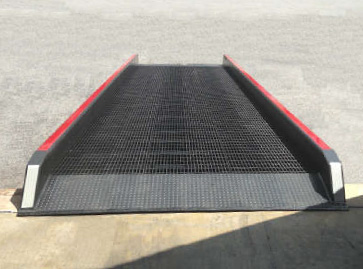
15” lip – that rests on the dock which allows the ramp to flex as loads move up and down the ramp.
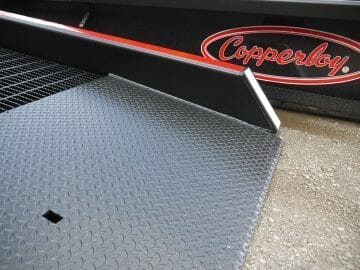
Low end plate – eliminates bumps when forklifts travel on and off the ramp with the beveled underside.
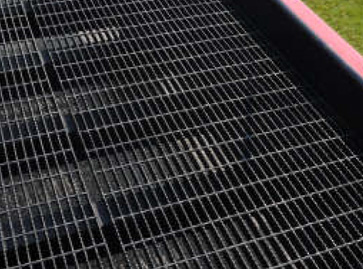
Deck grating – provides superior strength and traction from the electro-forged serrated steel construction.
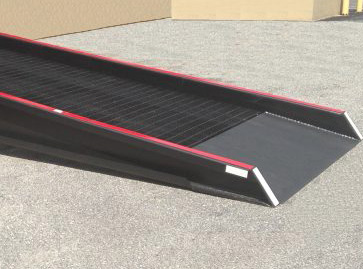
7 inch curb – prevents accidental vehicle runoff.
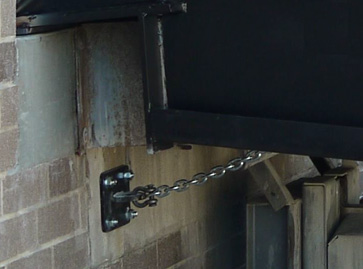
Chains and brackets – are provided on every dock-to-ground ramp and secures the ramp to your loading dock.
Our Dock-To-Ground Ramps
